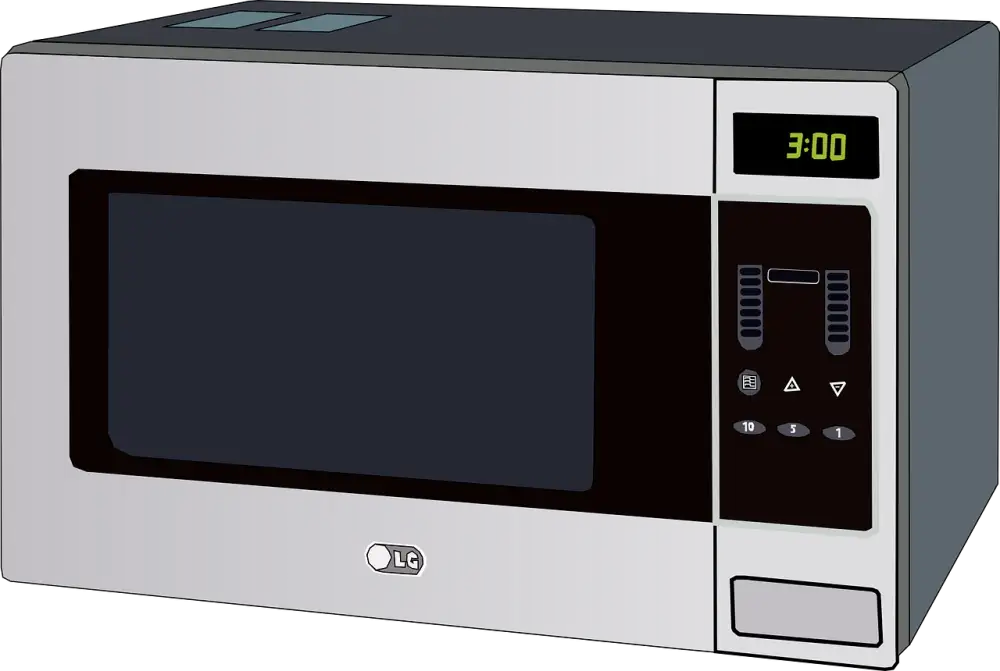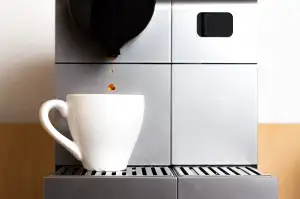Is it Safe to Microwave Styrofoam? Unveiling the Truth for Your Home

Microwaving food has become a convenient and time-saving method for many households. However, concerns have been raised about the safety of microwaving certain materials, particularly Styrofoam. In this article, we will delve into the topic to uncover the truth behind whether it is safe or not to microwave Styrofoam. By understanding its composition and potential health risks, we can make informed choices for a safe and healthy kitchen. So let's dive in and separate fact from fiction when it comes to microwaving Styrofoam!
Understanding Styrofoam: What is it Made of?
Styrofoam, also known as expanded polystyrene foam, is a lightweight and versatile material commonly used in packaging and food service industries. It is made from styrene, a petroleum-based chemical compound that undergoes a process called polymerization to form polystyrene. The resulting material is rigid, insulating, and resistant to moisture.
Polystyrene foam consists of 95-98% air, making it an excellent insulator for both hot and cold temperatures. Its low density and high strength-to-weight ratio make it ideal for protecting fragile items during transportation. However, the composition of Styrofoam raises concerns about its safety when exposed to heat, particularly in microwave ovens.
To better understand the potential risks associated with microwaving Styrofoam, we need to delve into the science behind its reaction to heat.
The Dangers of Microwaving Styrofoam: Potential Health Risks
Microwaving Styrofoam can pose potential health risks due to the chemicals it contains. Styrofoam is made from polystyrene, a type of plastic that contains a compound called styrene. When heated, styrene can leach into the food and beverages, especially in high temperatures or when in contact with fatty or acidic foods.
Exposure to styrene has been linked to various health concerns. The International Agency for Research on Cancer (IARC) has classified styrene as a possible human carcinogen. Prolonged exposure to high levels of styrene may increase the risk of certain cancers, such as leukemia and lymphoma.
Furthermore, studies have shown that styrene can also affect the central nervous system. It may cause symptoms like headache, fatigue, dizziness, and even depression with long-term exposure.
It's important to note that microwaving Styrofoam containers labeled as "microwave-safe" does not completely eliminate the potential health risks. While these containers are designed to withstand heat without melting or releasing harmful chemicals, it's still advisable to use caution and avoid microwaving them excessively or at high temperatures.
To ensure your safety and minimize potential health risks, it is best to transfer food into microwave-safe glass or ceramic containers before heating. These alternatives are generally considered safer options for microwaving food as they do not contain chemicals that can leach into your meals.
The Science Behind Microwaving Styrofoam: How it Reacts to Heat
When it comes to microwaving Styrofoam, understanding the science behind its reaction to heat is crucial. Styrofoam is made of a type of plastic called polystyrene, which contains a compound known as styrene. When exposed to high temperatures, such as those in a microwave, Styrofoam can potentially release harmful chemicals into your food.
The main concern with microwaving Styrofoam is the possibility of leaching. As the heat causes the Styrofoam to soften and melt slightly, it can release small amounts of styrene into your food. Studies have shown that styrene can be toxic and may have adverse effects on human health.
Furthermore, when heated, Styrofoam can also break down into other potentially hazardous compounds like benzene and toluene. These chemicals are known carcinogens and have been linked to various health issues.
It's important to note that not all types of Styrofoam react the same way when exposed to heat. Some manufacturers produce microwave-safe versions that are designed to withstand higher temperatures without releasing harmful substances. These products are labeled as "microwave-safe" or bear a symbol indicating their safety for use in microwaves.
To ensure your safety, always check the packaging for any specific instructions or warnings regarding microwave use. If there is no indication of microwave safety, it's best to transfer your food to a microwave-safe container before heating.
In conclusion, understanding the science behind how Styrofoam reacts to heat is vital for making informed choices in your kitchen. While some types may be labeled as microwave-safe, it's generally safer to opt for alternative containers specifically designed for microwave use. By prioritizing your health and safety, you can enjoy delicious meals without compromising your well-being.
Microwave-Safe Styrofoam: Is it a Myth or Reality?
There has been much debate surrounding the concept of microwave-safe Styrofoam. Many manufacturers claim that their products are safe for use in the microwave, while others argue that all Styrofoam should be avoided due to potential health risks. So, is microwave-safe Styrofoam a myth or reality?
The truth lies in understanding the different types of Styrofoam and their composition. Expanded polystyrene foam, commonly known as Styrofoam, is made up of 98% air and 2% plastic. This plastic component contains chemicals like styrene and benzene, which can leach into food when exposed to high temperatures.
While some manufacturers have developed microwave-safe versions of Styrofoam by adding heat-resistant additives, it is important to note that not all products labeled as such meet the same safety standards. The U.S. Food and Drug Administration (FDA) sets guidelines for materials intended for contact with food, including those used in microwaves.
To determine if a particular brand of Styrofoam is safe for microwaving, look for labels indicating FDA compliance or specifically stating "microwave-safe." These products undergo rigorous testing to ensure they do not release harmful chemicals into food during heating.
However, it's crucial to follow proper usage instructions provided by the manufacturer. Overheating or using non-microwave-safe containers can still cause the plastic to melt or release toxins.
To err on the side of caution, consider using alternative options for heating food in the microwave. Glass containers labeled as microwave-safe are an excellent choice as they do not leach harmful chemicals into your meals. Ceramic and silicone containers are also suitable alternatives.
In conclusion, while there are microwave-safe versions of Styrofoam available on the market, it is essential to choose carefully and follow proper usage instructions. Opting for alternative containers, such as glass or ceramic, can provide a safer option for heating food in the microwave. Making informed choices will help ensure a safe and healthy kitchen environment for you and your family.
Alternatives to Microwaving Styrofoam: Safer Options for Heating Food
While microwaving styrofoam may pose potential health risks, there are safer alternatives available for heating food. One option is to use microwave-safe glass or ceramic containers. These materials do not release harmful chemicals when exposed to heat and are a reliable choice for reheating leftovers or cooking meals.
Another alternative is to transfer the food into microwave-safe plastic containers labeled as BPA-free. These containers are specifically designed to withstand high temperatures without leaching harmful substances into the food. It's important to check the labels and ensure they are explicitly marked as microwave-safe.
Additionally, using microwave-safe paper products such as parchment paper or wax paper can be a safe option for heating certain foods. These papers are made with natural materials and do not release toxic chemicals when heated in the microwave.
Lastly, utilizing microwave-safe silicone containers can also be a viable alternative. Silicone is a flexible material that can withstand high temperatures without leaching harmful substances into the food. However, it's crucial to ensure that the silicone containers are explicitly labeled as microwave-safe before using them.
By opting for these safer alternatives, you can avoid potential health risks associated with microwaving styrofoam while still conveniently heating your food in the microwave.
In conclusion, it is important to prioritize safety when it comes to microwaving Styrofoam. While certain types of Styrofoam may be labeled as microwave-safe, it is crucial to follow the manufacturer's instructions and guidelines. The potential health risks associated with microwaving Styrofoam, such as the release of harmful chemicals like styrene, cannot be ignored.
To ensure a safe and healthy kitchen, consider using alternative options for heating food. Glass or ceramic containers are excellent choices as they do not leach harmful substances into your food. Additionally, microwave-safe plastic containers made from BPA-free materials can be used safely.
By understanding the composition of Styrofoam and the potential dangers it poses when exposed to heat, we can make informed choices for our kitchen. Prioritizing safety and opting for safer alternatives will help us create a healthier environment for ourselves and our loved ones.
Published: 15. 02. 2024
Category: Home



